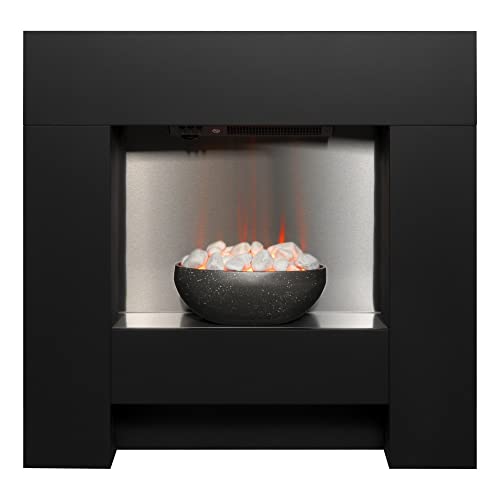The Charm and Functionality of Fireplaces: A Comprehensive Guide
Fireplaces have long been a central feature in homes, signifying heat, companionship, and comfort. They come in different styles, products, and fuel types, catering to the preferences and needs of diverse house owners. This article looks into the multifaceted world of fireplaces, exploring their history, types, setup factors to consider, and maintenance ideas, while offering FAQs to resolve common inquiries.
A Brief History of Fireplaces
Historically, fireplaces functioned as the foundation for cooking and heating homes. In ancient times, an open hearth was typically placed in the center of a residence. Over centuries, architectural improvements helped with the advancement of more sophisticated designs, progressing from easy stone structures to elaborate mantels that preside over modern home.
Key Historical Milestones:
- Ancient Times: Open fires in caverns and primitive huts for heat and cooking.
- Middle Ages: Large, frequently centralized chimney structures in great halls of castles.
- Renaissance: Decorative mantels and styles gain popularity, with the fireplace ending up being a symbol of wealth and status.
- Industrial Revolution: Advancements in products and making enable for a broader variety of fireplace styles.
- Modern Era: Gas and electric fireplaces become commonplace, enabling increased convenience and safety.
Types of Fireplaces
Today, numerous kinds of fireplaces are available, each with its special qualities. Below is a breakdown of the most typical types:
| Fireplace Type | Description | Pros | Cons |
|---|---|---|---|
| Wood-Burning | Traditional fireplaces fueled by wood. | Authentic experience, heat output. | Labor-intensive, needs appropriate venting/maintenance. |
| Gas | Fireplaces that use natural gas or lp. | Easy to use and keep. | Less ambiance compared to wood. |
| Electric | Uses electricity to produce heat and flames. | Safe, no venting needed. | Minimal heat output, greater energy costs. |
| Bioethanol | Utilizes bioethanol fuel, producing clean flames. | Ecologically friendly, portable. | Needs routine refueling. |
| Pellet | Utilizes compressed wood pellets as fuel. | Clean burning, sustainable. | Requires power for operation. |
Additional Considerations
When picking a fireplace, it is necessary to think about aspects such as:
- Fuel Availability: Consider what fuels are easily accessible in your area.
- Space and Aesthetics: The size of your living area and your style preferences must guide your choice.
- Structure Regulations: Always seek advice from regional regulations to guarantee compliance and security.
Installation Considerations
Installing a fireplace includes more than merely putting a structure in your home. Extensive preparation, expert input, and adherence to safety codes are paramount. Here are some crucial actions:
- Planning: Consider the size and type of fireplace, where it will be positioned, and its designated use.
- Assessment: Hire a licensed professional to examine your home and guarantee proper installation.
- Allows: Obtain any needed structure authorizations from local authorities.
- Materials: Select suitable products for the fireplace and surrounding location. Guarantee they are fire-resistant and designed for your fuel type.
Maintenance Tips for Fireplaces
Regular upkeep ensures your fireplace runs safely and efficiently. Here are essential upkeep ideas classified by fireplace type:
Wood-Burning Fireplaces
- Chimney Cleaning: Have your chimney cleaned every year to prevent creosote buildup.
- Examine for Damage: Check for fractures and damage to the firebox and chimney structure.
- Fire wood Storage: Store fire wood away from your house to avoid bug problems.
Gas Fireplaces
- Log Inspection: Regularly take a look at ceramic logs for fractures and change if necessary.
- Vent Cleaning: Ensure that vents are devoid of obstructions.
- Pilot Burner Check: Test pilot lights and ignition systems frequently.
Electric Fireplaces
- Cord Inspection: Frequently examine electrical cords for tearing or use.
- Clean Surfaces: Wipe down surface areas frequently to get rid of dust and debris.
- Smoke alarm: Ensure smoke alarm in the vicinity are functional.
Bioethanol and Pellet Fireplaces
- Fuel Storage: Store fuels in a cool, dry place away from direct sunshine.
- Routine Refueling: Monitor fuel levels and refuel as needed.
- Ventilation: Ensure correct ventilation when using these fireplaces.
FAQs About Fireplaces
Q1: Do I require an authorization to install a fireplace?
Yes, the majority of municipalities need permits for fireplace installations to make sure safety and compliance with regional building regulations.
Q2: How typically should I clean my chimney?
It is recommended to have your chimney cleaned at least as soon as a year, specifically if you utilize your fireplace frequently.
Q3: Can I convert a wood-burning fireplace to gas?
Yes, numerous property owners transform wood-burning fireplaces to gas for benefit, but speaking with an expert is suggested to guarantee an appropriate conversion.
Q4: Do electric fireplaces produce heat?
Yes, electric fireplaces can produce heat; nevertheless, their primary function is typically for ambiance, making them an appropriate option for those who desire a fire look without comprehensive heating.
Q5: Are bioethanol fireplaces safe?
Bioethanol fireplaces are usually safe when used properly; however, they require proper ventilation, and users need to follow all producer standards.
Fireplaces not just add aesthetic appeal to homes but also provide useful heating solutions. With click the next web page , styles, and maintenance requirements, house owners can make informed choices that best match their requirements and lifestyles. Whether choosing for the beauty of a wood-burning fireplace or the benefit of a gas model, a fireplace can significantly enhance a living area's convenience and atmosphere. As the hearth remains a centerpiece in homes, it continues to foster warmth, discussion, and connections amongst family and buddies.

